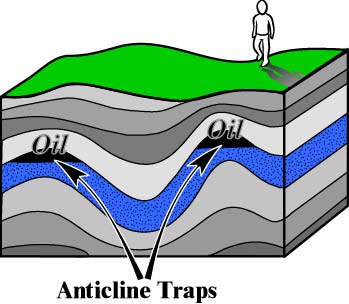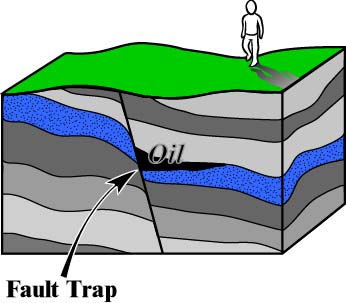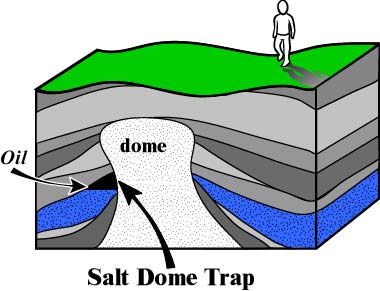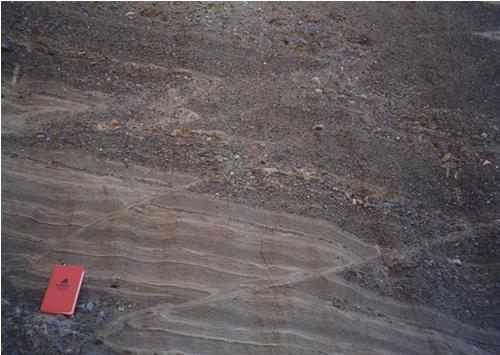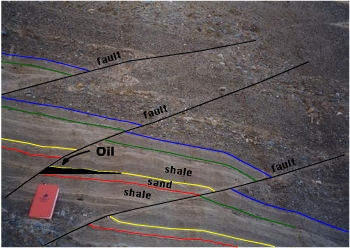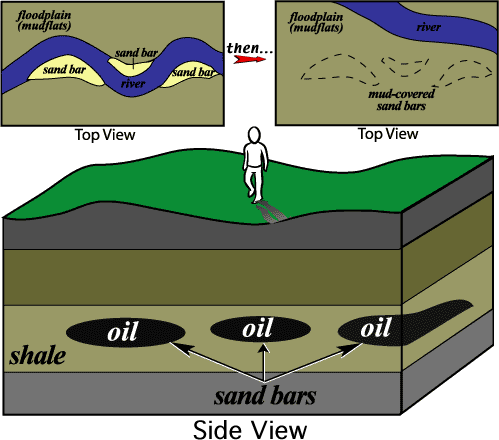Beneath the earth's surface, oil will ooze through rocks if there is enough space between them, but this oil will not accumulate into large quantities unless something traps it in a particular place. There are a variety of geologic traps, which themselves can be broken into categories
:
[*=left]Structural trap types: anticline, fault, salt
[*=left]Stratigraphic trap types: unconformity, lens, pinch-out
[*=left]Combination traps
It is important to remember that oil is not all by itself in some sort of underground cave, but is, instead, contained within solid rock - which has enough room within it to actually soak up (or become soaked in, however you look at it) oil

